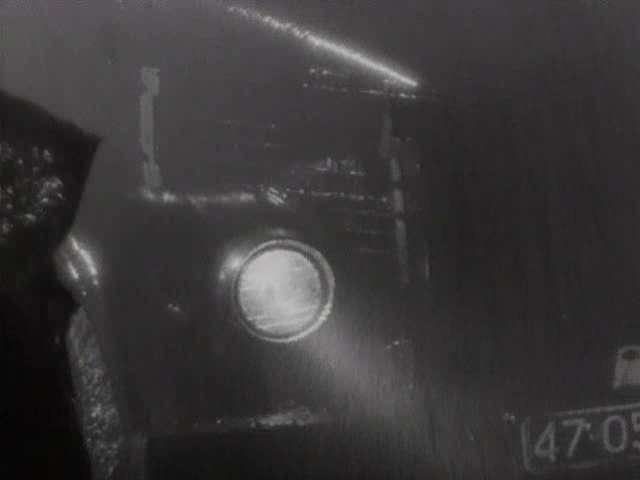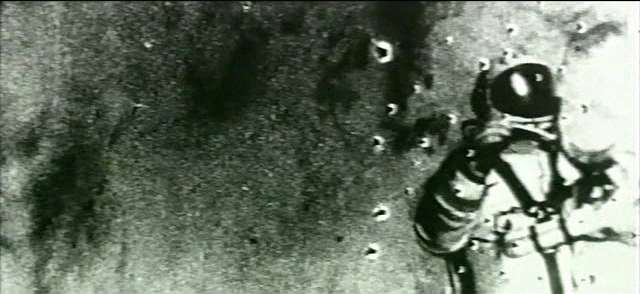
Poetic essay about the beginning of life from labor pains and birth and about its symbolic meaning.Read More »

Poetic essay about the beginning of life from labor pains and birth and about its symbolic meaning.Read More »

Quote:
In the early 90s, Pelechian made two spiritual films which are among his simplest and most beautiful productions: The End (1992) and Life (1993), Pelechian’s first colour film. In The End, Pelechian transforms footage from a train ride into a metaphor for the shape of a life. Early images of faces on the train give way to landscape, a journey through a black tunnel, and a final emergence into pure white light.Read More »

Ggle Translate wrote:
The film is dedicated to the 50th anniversary of the October Revolution (1917). Pelechian experiments with this film what he will not cease to develop in subsequent films, namely a montage of pre-existing images, alternating past, present and future, the plot of which forms a symbolic representation that goes beyond the history of Russia alone. We see popular revolt movements, parades, emblematic figures, rubbing shoulders with images of explosions, corpses or moving machines, with this rhythmic flow so particular to the aesthetics of the filmmaker.Read More »

Ggle Translate wrote:
The film seems to be organized around a great threat with the appearance of rumor; a representation of chaos through the apocalyptic fugues of herds of animals, terrified, whose camera gazes sometimes seem like desperate calls, but whose inertia in flight finds the counterpoint with the peaceful flight of clouds of birds escaping from the earth and men, who colonize it with the sound of guns.Read More »

Google Translate wrote:
Always processions, to the glory of “our century”, always this impression of a threat which cannot be said, of a rumor which manifests itself, but does not take shape; our century, we will not forget, it is the century of conquests and genocides, the century of all vanities too: men are going to put all their pretensions to the test. They will fight against the determinisms of nature, will fabricate their legend with cross-dressing, intimidating protocols, daring and obstinacy, to leave as testimony only a few images that tirelessly repeat the absurdity of this vocation. instinctive and totalitarian to colonization and occupation of worlds.Read More »

Artavazd Peleshian wrote:
“It was during my work on the film We that I became convinced that my interests were elsewhere, that the very essence and main thrust of montage for me was found less in assembling scenes and more in the possibility of disjoining them, not in their juxtaposition but their separation. It became clear that what interested me above all wasn’t joining two elements of the montage, but rather separating them by inserting a third, fifth, even tenth element between them.Read More »
Quote:
While it was long thought that his filmography had concluded with the film Life in 1993, Pelechian has now returned with a new film, simply titled Nature, through which he once again observes the delicate cohabitation of human communities with their environment—a central theme in his work. The images composing the film—mainly amateur footage gathered from the internet—are fragile traces shot in the midst of nature and its turmoil. A visual elegy, the film resolutely acknowledges nature’s superiority, which is capable of taming all human ambition.Read More »

The history of the Armenian nation from a Marxist point of view.
Illustrated by Vivaldi’s “The Four Seasons”.
***
Artavazd Pelechian’s Seasons of the Year (1975), a film-essay about the contradiction
and the harmony between man and nature, was the the 2nd and the last collaboration
with Vartanov, who had directed Autumn Pastoral (1971) from Peleshian’s screenplay.
In the Seasons of the Year (1975), for the first time, Artavazd Pelechian did not use any
archival footage likely due to the exquisite cinematography by Vartanov. Peleshian’s
Seasons of the Year (1975) is one of the 3 most important documentary films made in
Armenia, along with Sergei Parajanov’s Hakop Hovnatanian (1967) and Vartanov’s
Paradjanov: The Last Spring (1992).Read More »


1966 : La Terre des hommes (Zemlja ljudej)
“C’est le thème de la découverte permanente de la beauté du monde, que l’homme réalise dans sa vie et dans son travail, qui est développé dans le cadre d’une grande ville, présentée au cours d’une journée de labeur. Ce film démarre et se termine sur l’image de la sculpture de Rodin : le Penseur, qui tourne sur elle-même. Cette sculpture célèbre est devenue depuis longtemps le symbole de l’expression inaltérable de la pensée humaine. ” (Artavazd Pelechian, Mon cinéma¸Erevan : 1988).Read More »